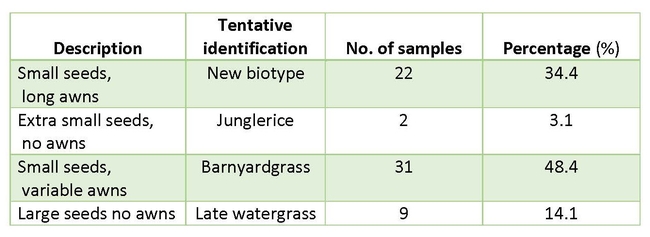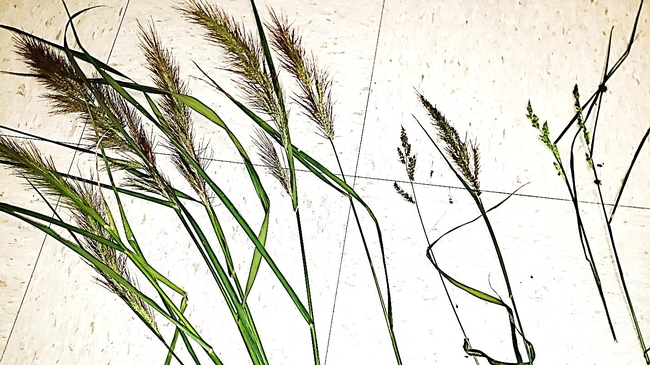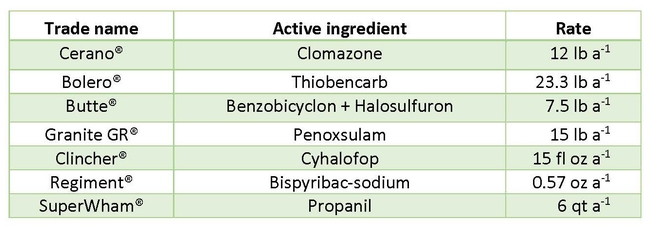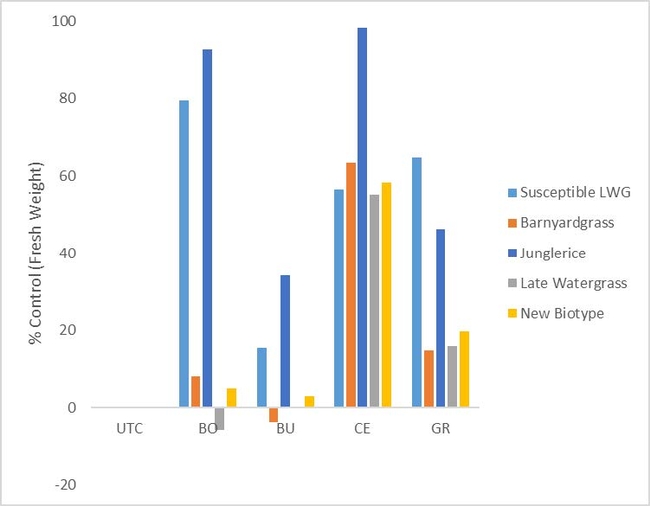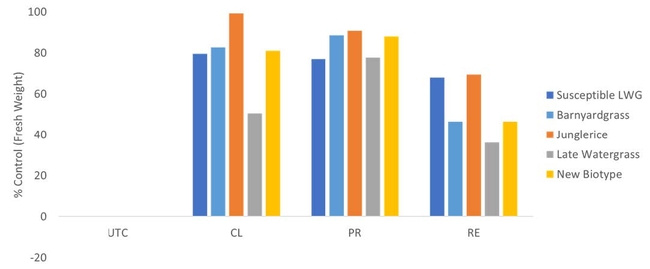Whitney Brim-DeForest is the UC Cooperative Extension County Director for Sutter and Yuba counties and the Rice and Wild Rice Advisor for Sutter, Yuba, Capitol Corridor MCP, Placer, and Nevada counties.
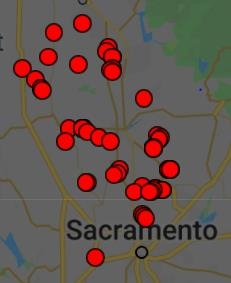
In 2020, we conducted a larger survey, with grower and PCA-submitted samples from across the Sacramento Valley (Figure 1), as well as samples we collected from UC and Rice Experiment Station fields. We had a total of 64 samples, which were representative of all of the watergrass species/biotypes: late watergrass, junglerice, barnyardgrass, and the new biotype/species.
I did a preliminary identification of the samples (Table 1), but better identification of the samples is currently in progress with the UC Davis Herbarium. From the preliminary identification, the new biotype/species were 34.4% of the samples, junglerice were 3.1% of the samples, barnyardgrass were 48.4% samples, and late watergrass were 14.1% of the samples. Junglerice, although not a current rice field weed, is found around the edges of rice fields, so it was included in the analysis. A representative photo of the panicles of the three major types is below (Figure 2).
Methods
The 64 samples collected in 2020 were the same samples used in the phenotypic analysis of weedy rice. The herbicides used for screening were: clomazone (Cerano®), thiobencarb (Bolero®), cyhalofop (Clincher®), benzobicyclon+halosulfuron (Butte®), penoxsulam (Granite GR®), bispyribac-sodium (Regiment®), and propanil (Stam® or SuperWham®). Rates were the recommended label rate (Table 2) with at least 4 replications per herbicide-sample combination.
Screenings took place at the Rice Experiment Station greenhouse in Biggs, CA, starting in the summer of 2021. The foliar applications and granular applications were conducted at different timings, and each was replicated twice in time. There were 3 replications of each treatment per sample. All formulations were tested at the 1.5-2 leaf stage of the watergrass. Dormancy was broken for the watergrass by wet-chilling in the fridge for approximately two weeks before planting. Pots were seeded and then thinned down to 5 plants per pot. All liquid formulations (Clincher®, SuperWham®, and Regiment®) were applied with the label-recommended surfactant (crop oil, crop oil, and Dyneamic®). Applications for into the water herbicides were made onto the water surface of bins that were flooded to 4” above the soil surface of the pots (where the watergrass was planted). All herbicide treatments were applied with a cabinet track sprayer with an 8001-EVS nozzle delivering 40 gallons of spray solution per acre (at a pressure of approximately 20 psi). At 7 days after treatment, plants were evaluated for visual percent control (in comparison to an untreated control). At 14 days after treatment, the number of living plants per pot was counted, and fresh biomass was measured (per pot) by cutting plants at the soil surface and taking the weight (per pot). Dry biomass was measured after drying the fresh weight samples down to a constant weight.
Results
On average, control of samples with granular herbicides was low (Figure 3). Junglerice, which is not a rice weed, but rather a weed that borders rice fields, was well controlled with Bolero® and Cerano®. It was not quite as well controlled with Butte® or Granite GR®. It was well-controlled by Clincher®, Propanil, and Regiment® as well (Figure 4). The two susceptible late watergrass samples were mostly well-controlled by Bolero® and Cerano® (Figure 3). They were not quite as well controlled with Butte® or Granite GR®. They were well-controlled by Clincher®, propanil, and Regiment® as well (Figure 4).
For the unknown samples, on average, control was poor with Bolero®, Butte®, and Granite GR®, regardless of species. Control with Cerano® was similar to control of the susceptible samples (Figure 3). We saw good control of all of the resistant samples with Clincher®, except for late watergrass. Propanil showed good control of all species as well. Regiment® had poor control of all of the species, except for junglerice (Figure 4).
Conclusion
To all growers and PCA's that submitted samples, we will be sending individual screening results, as there are differences between the samples in terms of resistance to different herbicides.
For growers, the implications of this preliminary screening are that control of this new biotype/species will need to be prioritized early in the season. Possible treatments (keep in mind that these have not been field-tested and could cause phytotoxicity) could be: a stale seedbed using a non-selective herbicide; pre-plant Abolish® (thiobencarb) followed by Cerano® or Butte® or Granite GR®; Cerano® followed by Butte® or Bolero® or Granite GR®; or Butte® followed by Granite GR® or Bolero®. There is still a strong likelihood that a follow-up application may still be required later in the season, even with these early-season applications.
Original source :: Rice Notes - Feb. 2022
Author - County Director, Sutter and Yuba Counties and CE Rice and Wild Rice Advisor
